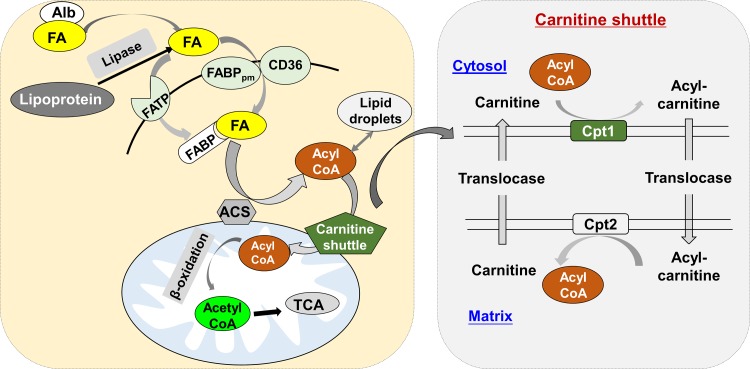Fig. 2.
Fatty acid uptake, activation, and oxidation. Long-chain fatty acids (FAs) disassociated from albumin (Alb) or lipoproteins can enter cells via specific transport proteins (e.g., FATP and CD36/FABPpm). Once inside the cell, long-chain FAs are catalyzed and activated by fatty acyl-CoA synthetases (ACS) to form fatty acyl-CoA, which is then ready for storage in lipid droplets (LDs) as neutral lipids (e.g., triglycerides). Under metabolic stress or nutrient deprivation, FAs are released from LDs through lipolysis or lipophagy for energy generation by β-oxidation and tricarboxylic acid (TCA) cycle in the mitochondria. Unlike short- and medium-chain FAs, long-chain FAs require the carnitine shuttle system to be transported into mitochondrion for β-oxidation. Cpt1 (mainly Cpt1a) is the first component and rate-limiting step of the carnitine shuttle system, which catalyzes the transfer of the acyl group of LCFAs from coenzyme A (CoA) to carnitine to form acylcarnitine.

